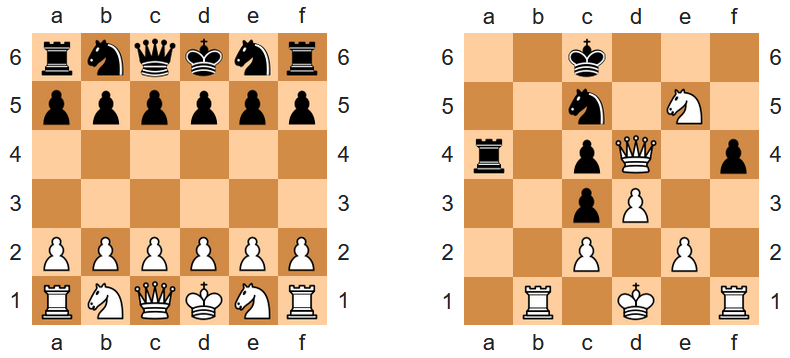
The first chess-like game played by a computer was this little variant, written for the MANIAC I by Paul Stein and Mark Wells at Los Alamos Scientific Laboratory in 1956. To accommodate the computer’s limitations, there are no bishops (and pawns can’t promote to bishops); pawns can advance only one square on their first move; there is no en passant capture; and there is no castling.
It played three games. In the first it played against itself; in the second, a strong human player gave queen odds and won; and in the third it played against a lab assistant who’d learned the rules of chess only recently. The computer won the last game, marking the first time that a computer beat a human in a chess-like game. Here’s the score:
White: MANIAC I Black: Beginner
1.d3 b4 2.Nf3 d4 3.b3 e4 4.Ne1 a4 5.bxa4 Nxa4 6.Kd2 Nc3 7.Nxc3 bxc3+ 8.Kd1 f4 9.a3 Rb6 10.a4 Ra6 11.a5 Kd5 12.Qa3 Qb5 13.Qa2+ Ke5 14.Rb1 Rxa5 15.Rxb5 Rxa2 16.Rb1 Ra5 17.f3 Ra4 18.fxe4 c4 19.Nf3+ Kd6 20.e5+ Kd5 21.exf6=Q Nc5 22.Qxd4+ Kc6 23.Ne5# [diagram] 1–0
